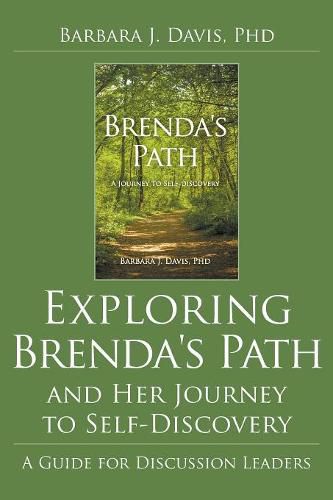Readings Newsletter
Become a Readings Member to make your shopping experience even easier.
Sign in or sign up for free!
You’re not far away from qualifying for FREE standard shipping within Australia
You’ve qualified for FREE standard shipping within Australia
The cart is loading…






This title is printed to order. This book may have been self-published. If so, we cannot guarantee the quality of the content. In the main most books will have gone through the editing process however some may not. We therefore suggest that you be aware of this before ordering this book. If in doubt check either the author or publisher’s details as we are unable to accept any returns unless they are faulty. Please contact us if you have any questions.
Everyone knows someone who has been molested, sexually abused, or raped. The problem? No one talks about it.
Brenda’s Path: A Journey to Self-Discovery is a novel about perceptions of sexuality. It brings to life the rape of a 12-year-old girl. Brenda lives with her family in a working-class suburb of Detroit, Michigan. She is a good student and popular. Her leadership qualities are obvious. She plays sports and loves to dance. She is active with her church youth group and serves as a counselor in summer youth camps.
On the surface, Brenda appears to be socially, emotionally, and spiritually healthy. However, she hides an ugly secret that weighs heavily on her: She is a survivor of rape.
Hopefully, this Guide for Discussion Leaders will motivate readers of all ages to examine their own perceptions of sexuality, and more importantly, to explore what a healthy and ethical sexual self might look like.
After reading Brenda’s story, and after follow-up discussions, communities may want to consider developing a comprehensive action plan to reduce the incidence of abuse in families, neighborhoods, schools, clubs, and the larger community. Once they can agree on a clear portrait of what is meant by a healthy and ethical sexual self, these representatives can then build a plan and timeline to educate the broader community through age-appropriate channels. This plan should reflect input from the educational, spiritual, and mental health communities, and must reach beyond survivors and perpetrators so the broader community knows, understands, and is prepared to act if and when sexual abuse occurs.
$9.00 standard shipping within Australia
FREE standard shipping within Australia for orders over $100.00
Express & International shipping calculated at checkout
This title is printed to order. This book may have been self-published. If so, we cannot guarantee the quality of the content. In the main most books will have gone through the editing process however some may not. We therefore suggest that you be aware of this before ordering this book. If in doubt check either the author or publisher’s details as we are unable to accept any returns unless they are faulty. Please contact us if you have any questions.
Everyone knows someone who has been molested, sexually abused, or raped. The problem? No one talks about it.
Brenda’s Path: A Journey to Self-Discovery is a novel about perceptions of sexuality. It brings to life the rape of a 12-year-old girl. Brenda lives with her family in a working-class suburb of Detroit, Michigan. She is a good student and popular. Her leadership qualities are obvious. She plays sports and loves to dance. She is active with her church youth group and serves as a counselor in summer youth camps.
On the surface, Brenda appears to be socially, emotionally, and spiritually healthy. However, she hides an ugly secret that weighs heavily on her: She is a survivor of rape.
Hopefully, this Guide for Discussion Leaders will motivate readers of all ages to examine their own perceptions of sexuality, and more importantly, to explore what a healthy and ethical sexual self might look like.
After reading Brenda’s story, and after follow-up discussions, communities may want to consider developing a comprehensive action plan to reduce the incidence of abuse in families, neighborhoods, schools, clubs, and the larger community. Once they can agree on a clear portrait of what is meant by a healthy and ethical sexual self, these representatives can then build a plan and timeline to educate the broader community through age-appropriate channels. This plan should reflect input from the educational, spiritual, and mental health communities, and must reach beyond survivors and perpetrators so the broader community knows, understands, and is prepared to act if and when sexual abuse occurs.